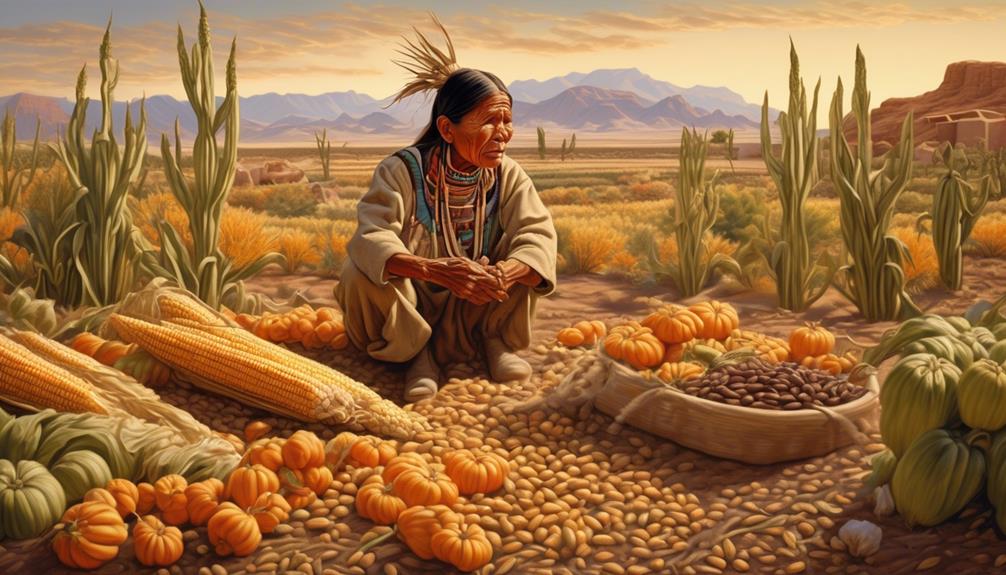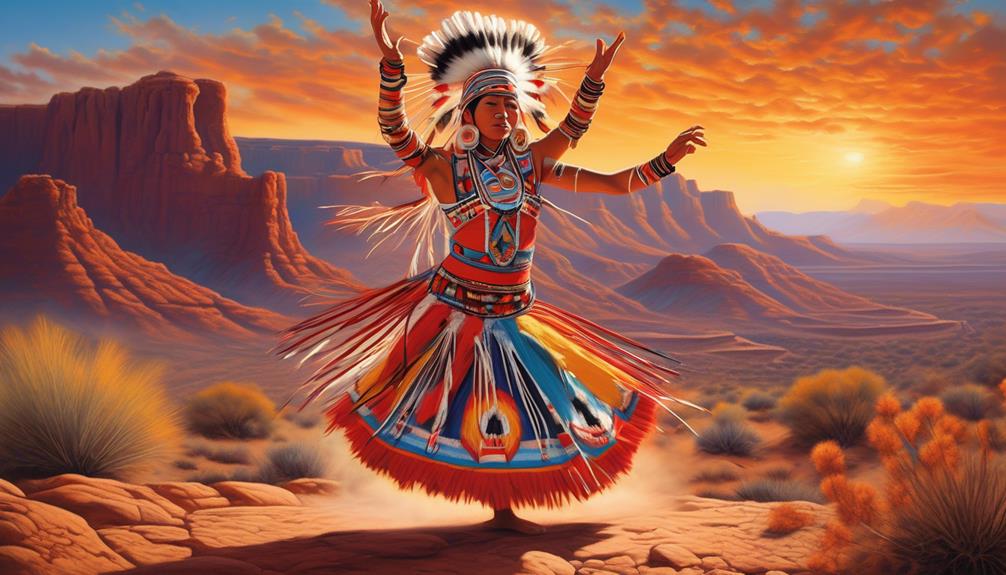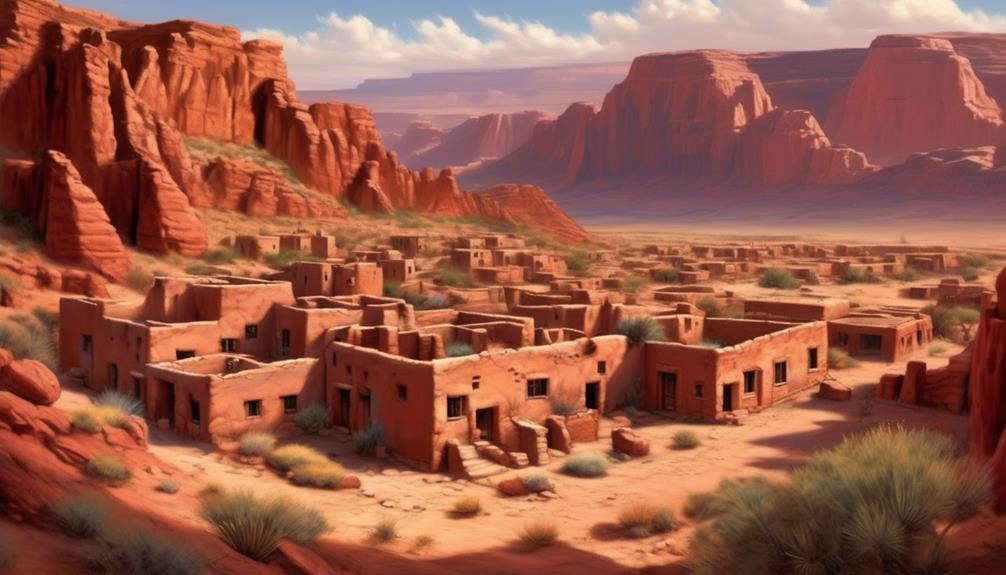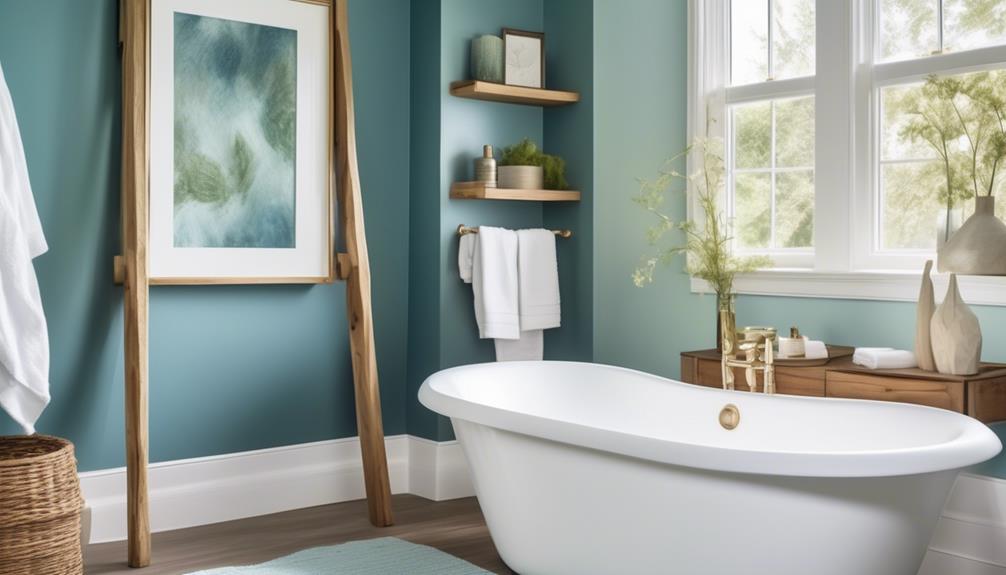When we think about the Hopi tribe, we typically link them to the modern amenities of grocery stores and fast food. However, have you ever wondered about the traditional foods that nourished the Hopi people hundreds of years ago?
The diet of the Hopi tribe was deeply intertwined with their cultural practices and environment, offering a fascinating glimpse into the rich tapestry of their traditions. As we explore the culinary heritage of the Hopi, we will uncover the staple foods that formed the core of their diet, the ingenious cooking methods they employed, and the spiritual significance of their food choices.
Join us on a journey through time as we unravel the culinary secrets of the Hopi tribe.
Key Takeaways
- Hopi people practice dry farming, growing crops like corn, beans, and squash without irrigation.
- The Hopi diet has been influenced by the introduction of new crops like wheat by Spanish settlers and through trade with other tribes.
- Staple foods in the Hopi diet include corn, beans (particularly tepary beans), and various types of squash.
- Traditional Hopi cooking methods involve the use of clay pots and open fires, creating rich, savory flavors.
Historical Overview of Hopi Cuisine
Studying the historical overview of Hopi cuisine provides valuable insights into the traditions and culinary practices of this ancient Native American tribe. The Hopi people have a deep connection to the land, and this is reflected in their farming techniques. They've been practicing dry farming for centuries, using the technique of planting in arid conditions without irrigation. This method has been essential to their survival, allowing them to grow crops such as corn, beans, and squash, known as the 'Three Sisters,' which are central to their diet.
Cultural influences have also played a significant role in shaping Hopi cuisine. The tribe's interactions with neighboring tribes and historical events have contributed to the diversity of their culinary practices. For example, the introduction of new crops like wheat by Spanish settlers in the 16th century influenced the Hopi diet. Additionally, trade with other tribes brought new flavors and cooking techniques to the Hopi people, enriching their culinary traditions.
Understanding the historical context of Hopi cuisine gives us a deeper appreciation for the tribe's farming methods and the cultural exchange that has shaped their food practices over time.
Staple Foods in Hopi Diet
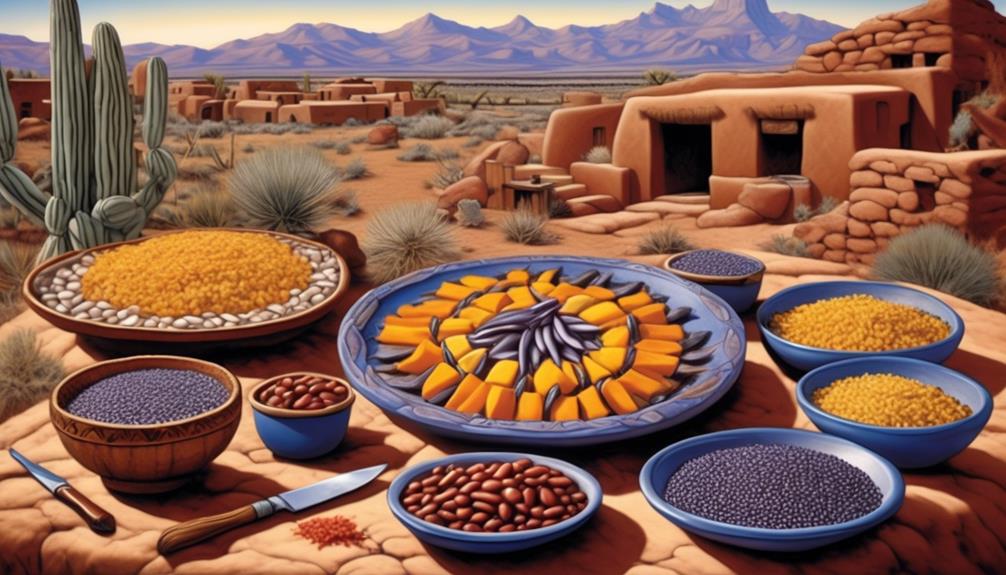
The Hopi tribe relies on a variety of staple foods to sustain their traditional diet and cultural practices. These staple foods are essential to the Hopi farming traditions and are used in a wide range of traditional recipes that have been passed down through generations.
- Corn: Corn is a fundamental staple in the Hopi diet and holds significant cultural and spiritual importance. It's used in various forms such as ground cornmeal, whole corn, and dried corn for making traditional dishes like piki bread and hominy.
- Beans: Beans, particularly tepary beans, play a vital role in the Hopi diet. They're rich in protein and are often used in stews, soups, and as a side dish. Beans are also an essential crop in Hopi farming, contributing to the tribe's self-sustainability.
- Squash: Various types of squash, such as acorn squash and butternut squash, are integral to the Hopi diet. They're used in both savory and sweet dishes, providing essential nutrients and adding depth to traditional recipes.
These staple foods not only provide sustenance but also hold deep cultural significance within the Hopi tribe, showcasing the close relationship between Hopi farming practices and traditional culinary heritage.
Traditional Hopi Cooking Methods
Using traditional clay pots and open fires, Hopi people cook their food, preserving their cultural culinary practices. Traditional Hopi cooking techniques involve using clay pots to cook over open fires, which imparts a unique flavor to the food. The pots are often lined with corn husks or leaves to prevent sticking and add extra flavor. Many traditional Hopi dishes are cooked slowly over low heat, allowing the flavors to meld together and creating rich, savory dishes.
Modern adaptations of Hopi recipes have incorporated more contemporary cooking methods, such as stovetop cooking and baking in conventional ovens. However, efforts are made to retain the traditional flavors and cooking techniques. For example, traditional ingredients like blue cornmeal and juniper ash are still used to make piki bread, a thin, delicate Hopi staple. Additionally, traditional cooking methods are being revitalized and celebrated in modern times through events and workshops that teach the art of traditional Hopi cooking.
Preserving traditional Hopi cooking methods allows for the continuation of cultural practices and ensures that the unique flavors and techniques are passed down through generations.
Seasonal and Foraged Foods
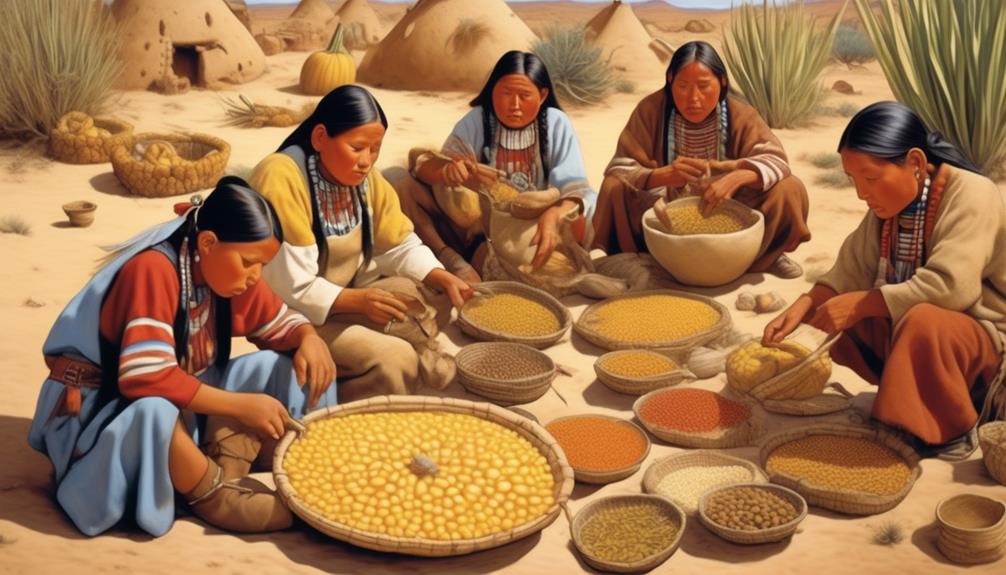
During certain times of the year, we gather a variety of seasonal and foraged foods to incorporate into our traditional Hopi dishes. Our foraging techniques have been passed down through generations, allowing us to sustainably harvest a diverse range of wild plants and herbs. When it comes to seasonal nutrition, we understand the importance of adapting our diets to the changing availability of foods throughout the year.
Foraging Techniques
- Plant Identification: We've a deep understanding of the flora in our region, enabling us to identify edible plants and herbs with precision.
- Sustainable Harvesting: We practice sustainable foraging to ensure the continued abundance of wild foods for future generations.
- Preservation Methods: Our knowledge of preservation techniques such as drying and storing allows us to make the most of our foraged foods year-round.
Spiritual Significance of Hopi Foods
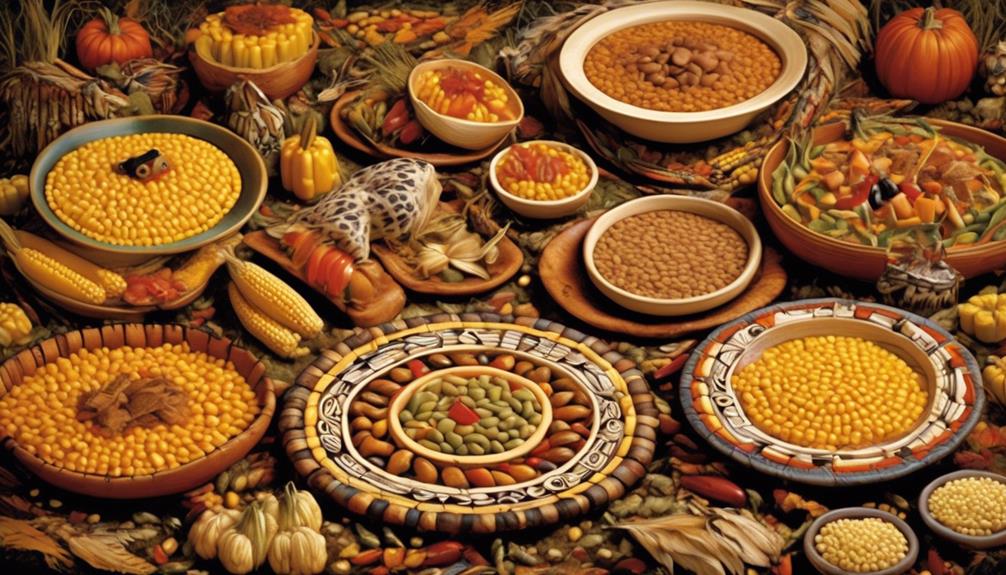
Gathering a variety of seasonal and foraged foods hasn't only sustained our bodies but also nourished our spirits, as our traditional Hopi dishes hold profound spiritual significance within our culture. Our food isn't just sustenance; it's intertwined with our cultural rituals and ceremonies. Symbolic meanings are deeply embedded in the ingredients and preparation of our dishes, making them essential elements of ceremonial feasts and food offerings.
In our culture, the act of preparing and consuming food is a spiritual practice. Each ingredient is carefully chosen and prepared to honor our ancestors and the earth. For instance, the corn, beans, and squash, known as the 'Three Sisters,' represent the balance and interdependence of life. These foods are central to our ceremonies, symbolizing the cycle of life, growth, and harvest.
During ceremonial feasts, specific dishes are prepared to honor deities, ancestors, and natural elements. The preparation and consumption of these foods are seen as sacred acts, fostering a deep connection between the physical and spiritual realms. Through our traditional Hopi foods, we not only nourish our bodies but also strengthen our spiritual bond with our heritage and the natural world.
Frequently Asked Questions
What Are Some Modern Adaptations of Traditional Hopi Recipes?
We've seen a rise in modern adaptations of traditional Hopi recipes, blending traditional ingredients with contemporary cooking techniques. This fusion cuisine brings a fresh twist to classic dishes, appealing to diverse palates while preserving cultural heritage.
Chefs creatively infuse Hopi flavors into new dishes, using local and seasonal ingredients. This innovative approach not only honors the culinary traditions but also introduces them to a wider audience, fostering a deeper appreciation for Hopi cuisine.
How Did the Hopi Tribe Preserve Their Food for the Winter Months?
To preserve food for winter, the Hopi Tribe used traditional methods like drying, smoking, and storing in underground cellars. These methods helped ensure a stable food supply during the colder months.
Drying food like corn, beans, and squash allowed them to save them for later use. Smoking fish and meat extended their shelf life. Storing in underground cellars provided a cool environment to keep food fresh.
Are There Any Taboos or Restrictions on Certain Foods Within the Hopi Culture?
Taboo foods and cultural restrictions play a significant role in Hopi traditions. Certain foods are avoided or restricted during food rituals and traditional ceremonies, in line with spiritual beliefs.
These taboos are deeply ingrained in our culture and guide our dietary practices, reflecting our reverence for the natural world and our ancestors. Understanding and respecting these food restrictions is essential to honoring our heritage and maintaining the spiritual balance within our community.
What Role Did Agriculture Play in the Hopi Diet and Lifestyle?
Agriculture played a vital role in the Hopi diet and lifestyle. The cultivation of corn, beans, and squash was central to our sustenance and cultural significance.
While hunting and gathering contributed, the hyperbole of our agricultural practices can't be overstated.
Our food rituals and ceremonies revolved around the planting and harvesting seasons, emphasizing the interconnectedness of our people, the land, and our sustenance.
Did the Hopi Tribe Have Any Specific Rituals or Ceremonies Related to Food Consumption?
In Hopi culture, food consumption is intertwined with our cultural practices and food symbolism. We have specific rituals and ceremonies related to food, emphasizing its importance in our community. These practices reflect our deep connection to the land and the significance of certain foods in our traditions.
Through these rituals, we honor our ancestors and express gratitude for the sustenance provided by the earth.
Conclusion
In conclusion, the food of the Hopi tribe wasn't just sustenance, but a reflection of their deep connection to the land and their spiritual beliefs.
We can't help but feel a sense of awe when we think about how the Hopi people honored the earth and its gifts in every meal.
It's truly inspiring to see how their traditional cuisine has stood the test of time.
Mary is a passionate writer who brings creativity and a fresh perspective to our team. Her words have the power to captivate and inspire, making her an essential contributor to our content. Mary’s commitment to storytelling and dedication to promoting Indigenous culture ensures that her work touches the hearts of our readers. We’re fortunate to have her as part of our team.




